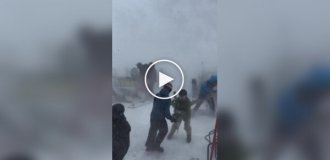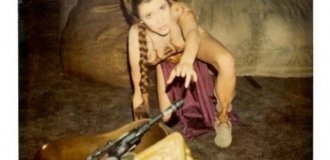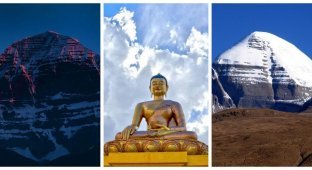At the age of 50 he decided to climb Everest, but was abandoned there twice. The story of an unprecedented rescue (14 photos)
He did not reach the top 400 meters. The wife was told the tragic news, but this man was able to survive at night on Everest at -70 ° C without oxygen and even descend to the camp on his own. 
Seaborn Beck Weathers at Everest Base Camp before the summit.
The height of Everest (Himalayas) is 8848 meters; there is nothing higher than it on the planet. And this is not a “good” mountain at all. More than 300 climbers from all over the world remained there forever; no one will bring their bodies down.
This sad statistics could be supplemented by Siborn Beck Weathers from Texas (USA) - a living example of what a night spent on the top of Everest can do to a person.
50 year old doctor
Beck was not an athlete or professional climber. He was just trying to fight depression. And he gave himself the $65,000 climb to the “top of the world” for his 50th birthday. 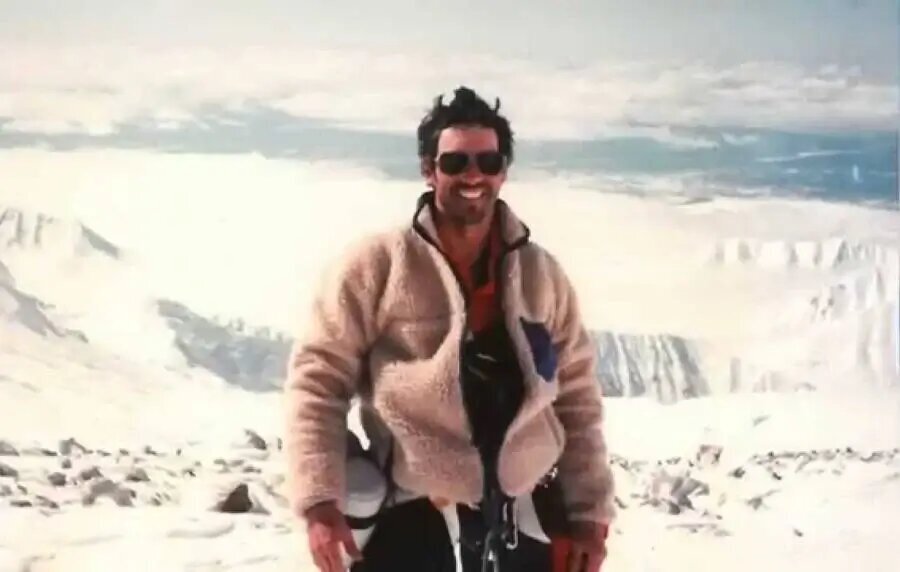
Before the tragedy, Weathers worked as a pathologist at the hospital and lived with his wife, son and daughter in Dallas. In 1986, at the age of 40, Weathers began to lose his zest for life. He believed that serious physical activity could return him to his former happiness. He planned to conquer the seven highest mountains on seven continents, and in 1993 Beck climbed the Vinson Massif in Antarctica. 
On May 10, 1996, three groups set off to Everest - Adventure Consultants, in which Beck was, Mountain Madness, in which Scott Fisher and Anatoly Boukreev were guides, and a Taiwanese expedition led by Gao Minghe. Plus, several other climbers. In total, there were about 30 people on the slope of Everest that day (according to other sources - 50). 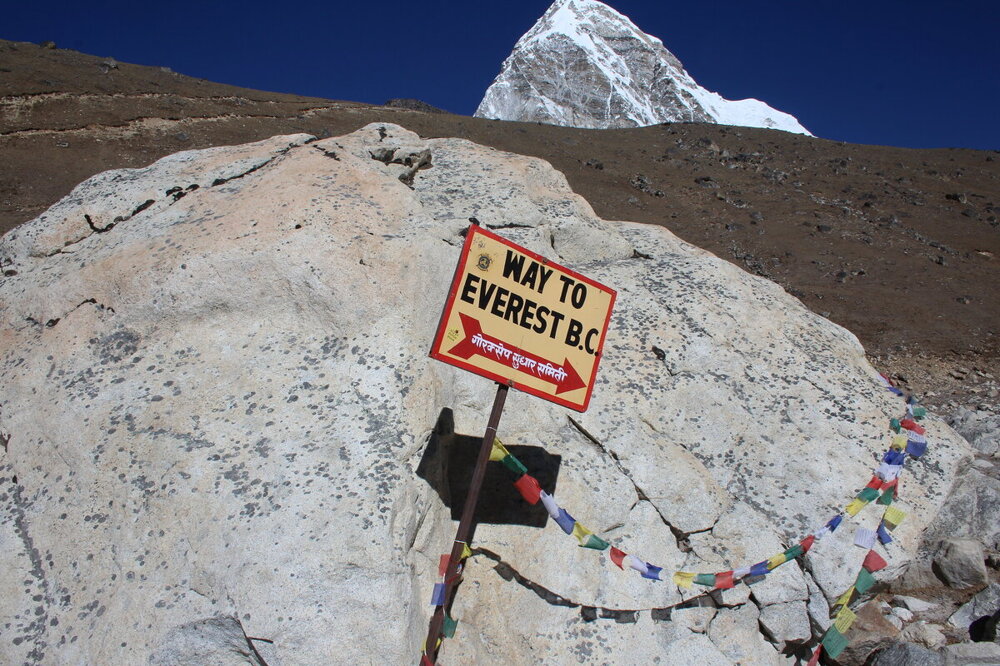
"Adventure Consultants" and "Mountain Madness" were commercial. To put it bluntly, ordinary people paid a lot of money to be helped to climb the highest mountain in the world. So, in the group there was an ordinary postman who worked two jobs to save up for the ascent.
Before the disaster
All three groups of climbers decided to unite and climb together. Sounds common sense and logical. But in fact it turned out that so many people following the route at the same time only interfere with each other. And in difficult sections, participants had to wait a long time for their turn, for example, to cross a crack or climb ropes.
But the reserves of the human body are limited. The same goes for oxygen reserves. And any delay on the route can be fatal. 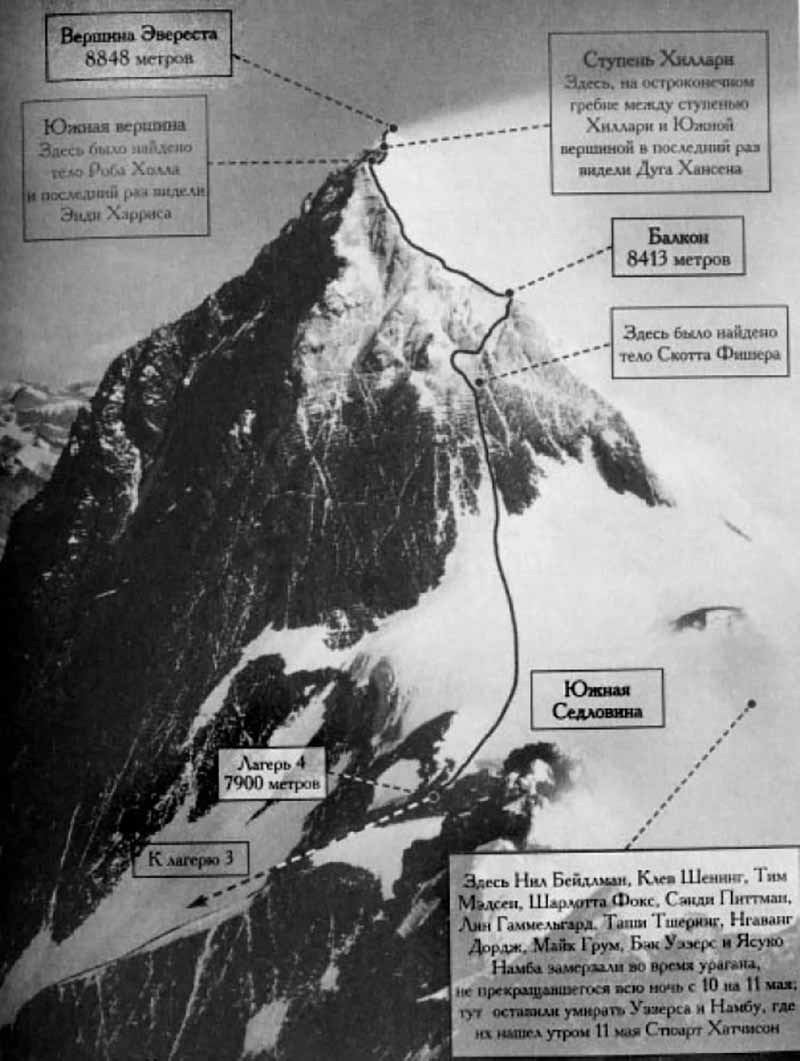
At an altitude of approximately 8,400 meters, Weathers felt that his eyes were hurting and he could hardly see anything, and reported this to guide Hall. The fact is that shortly before the ascent, Beck had surgery on his eyes, and apparently complications began due to pressure changes.
The leader ordered to immediately go down to the camp. But Weathers assumed that if the sun came out he would feel better, so he waited for the group to return, 400 meters short of the top. 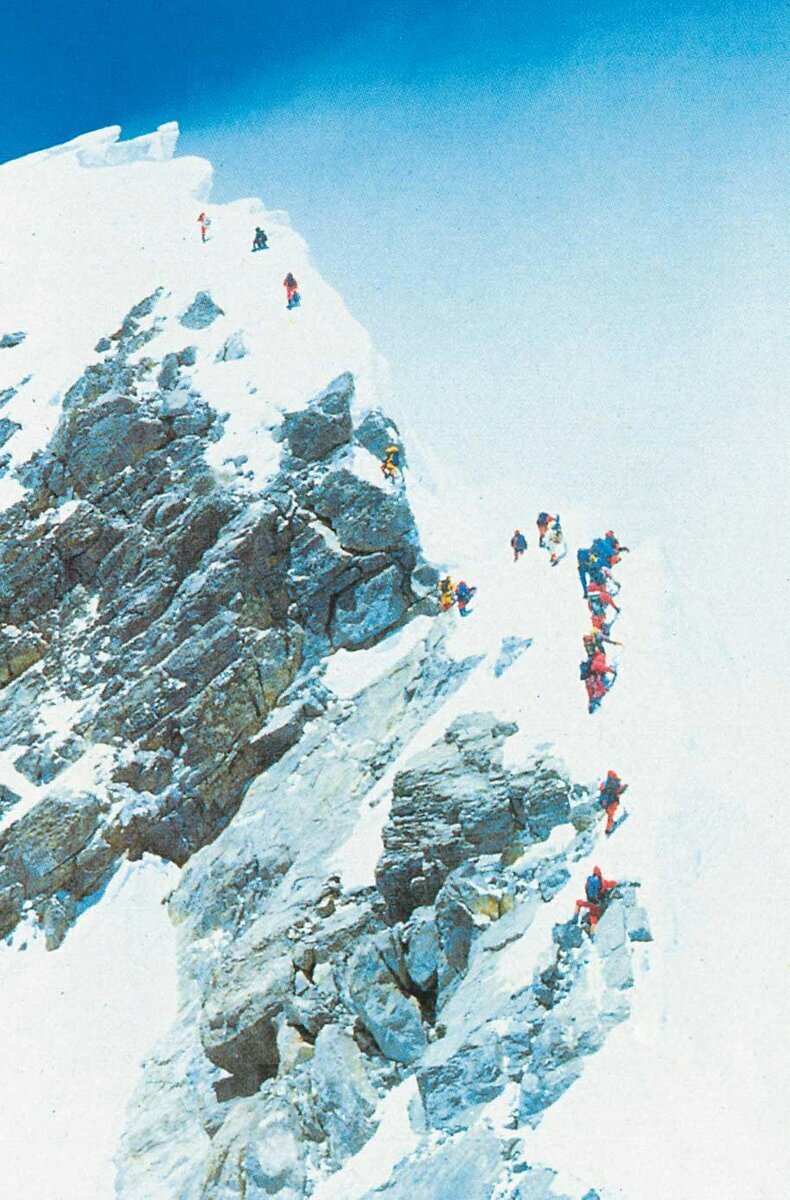
Scott Fischer's team on Hillary's steps. 1996
But only 4 people reached the summit that day. The rest either turned around and went down, or remained on Everest.
At approximately 4:00 p.m., a snowstorm began and Weathers, along with co-guide Michael Groom and the remaining climbers, became trapped in a "death zone" where oxygen levels were too low.
Night of disaster
During the storm, the temperature dropped to -60 °C. Plus, thin air and snowstorm. Do not forget that the climbers could not descend and had already spent a lot of time on the mountain; oxygen supplies had come to an end. And all this at an altitude of more than 8,000 meters, where even a rescue helicopter cannot fly. 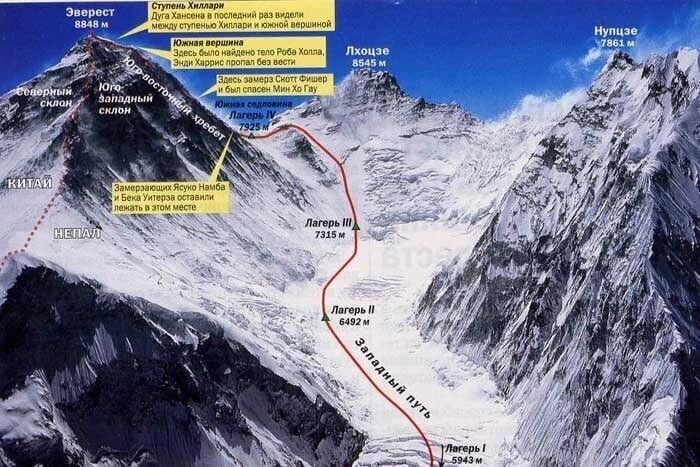
When it became clear that things were bad and their strength was running out, Beck and four other weakest climbers were left on the slope in the South Col area, while others decided to go down for help.
For 18 agonizing hours, Everest tried to swallow Weathers and his comrades. Buck was delirious from blindness, exhaustion, frostbite and altitude sickness.
At one point, he raised his hands up and shouted: “I understand everything!” before falling into a snowdrift, so the other climbers decided.
Abandoned again
Early in the morning, Weathers lay in the snow in a hypothermic coma, and the surviving climbers from his group were evacuated down by a rescue team led by Anatoly Boukreev (from Scott Fisher's expedition).
For some unknown reason, rescuers did not notice Weathers. As they wrote later, he crawled to the side, and visibility was poor. 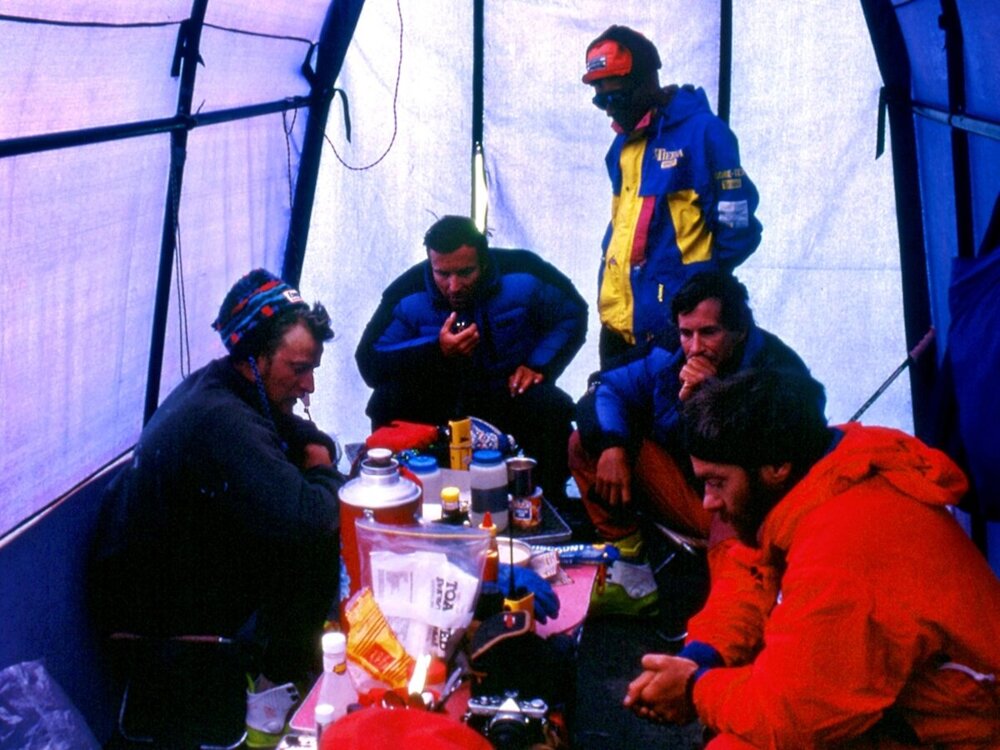
Climber Ed Viesturs speaks from Camp IV with those who went to the summit during the 1996 storm.
Later, Stuart Hutchinson from his group and two Sherpas climbed the slope. They approached Beck. He seemed to still be breathing, but the rescuers decided that there was no chance. Not far from him, a member of his group, Japanese Yasuko Namba, was lying unconscious. They didn’t save her either.
The next day, the bell rang at his home in Dallas. Weathers' wife Peach picked up the phone and heard words of condolences from a representative of tour operator Adventure Consultants. From the other end of the line they reported a tragedy. 
Meanwhile, 22 hours after the start of the catastrophic storm and 15 hours after the hypothermic coma began, Weathers' body warmed up in the morning sun, and he regained consciousness. My first thought was that he was back in Dallas. Then he saw his right hand. She was lifeless and frostbitten.
With the last of his strength, the climber rose to his feet and wandered, stumbling at every step, in the direction that he hoped would lead to Camp IV. All day he wandered and crawled, forbidding himself to stop. Sometimes he fell and lay looking at the sky through frostbitten eyelids. I really wanted to just close my eyes and fall asleep. 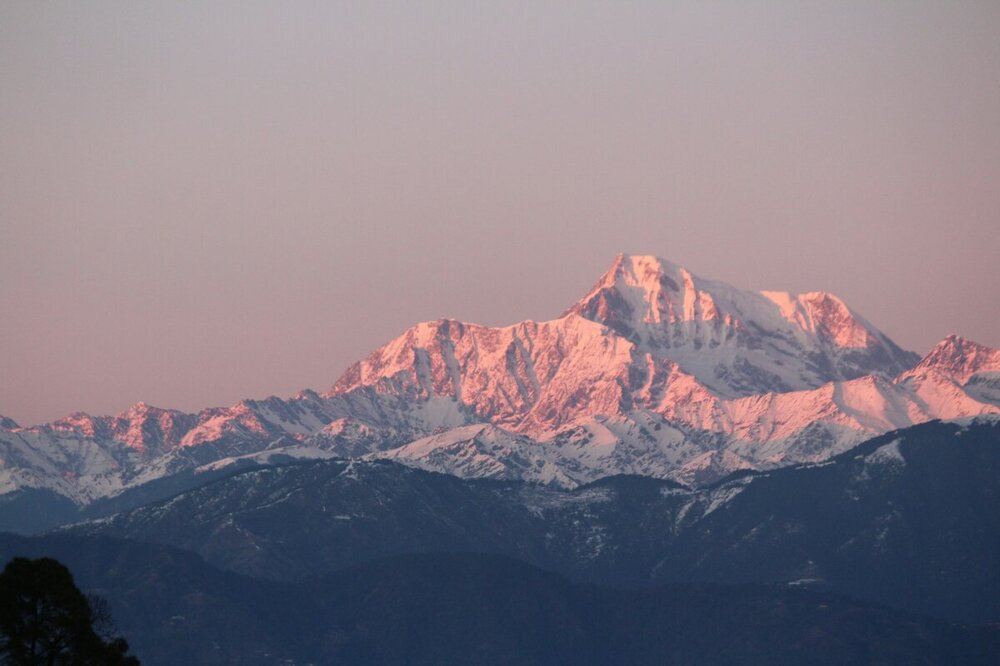
Everest
“An hour before sunset, I opened my eyes, and a vision appeared before me - I clearly saw my wife and children. This is what made me get up and go to the camp. The sun was about 15 degrees above the horizon and moving downward, Weathers recalls. “I knew that I had one hour to live.” No one has ever survived two nights on Everest."
Return
He could. Beck crawled to the camp. For the comrades it was like the appearance of a ghost. Ken Kamler, a member of the group, recalls: “Tom shouted - Beck is back! I looked out of the tent and saw a terrible, ghostly creature with a black, as if burnt, spot instead of a face.”
But reaching the camp does not mean being saved. The rescue helicopter won't get here anyway. Beck had to spend another terrible night in a cold tent. He could neither eat nor drink, nor properly cover himself with sleeping bags. His comrades again decided that he had no chance and were busy rescuing other survivors. 
Everest Base Camp.
The next day, the group members were amazed to see that Beck was still alive. He had to go to lower camp I on frostbitten feet, where a helicopter was waiting for him and other victims. 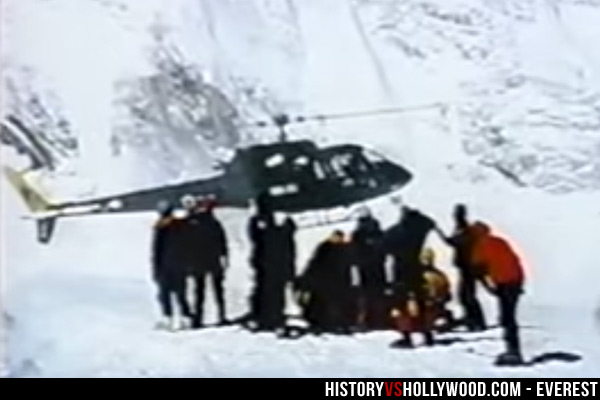
It was also difficult to negotiate with the helicopter pilot to fly to a height of 6,000 meters (first camp). Everyone refused, except for the Nepalese military pilot, Lieutenant Colonel Madan K.C.
The fact of survival on the high slope of Everest calls into question the unspoken rule of climbers - to leave without help those who cannot go on their own. This is somehow wrong.
During that storm on May 10, 1996, 8 people remained on Everest forever:
four members of Rob Hall's band, including himself;
Scott Fisher, Head of Commercial Group for Mountain Madness;
three climbers from the Indian National Expedition.
Two more suffered serious frostbite. 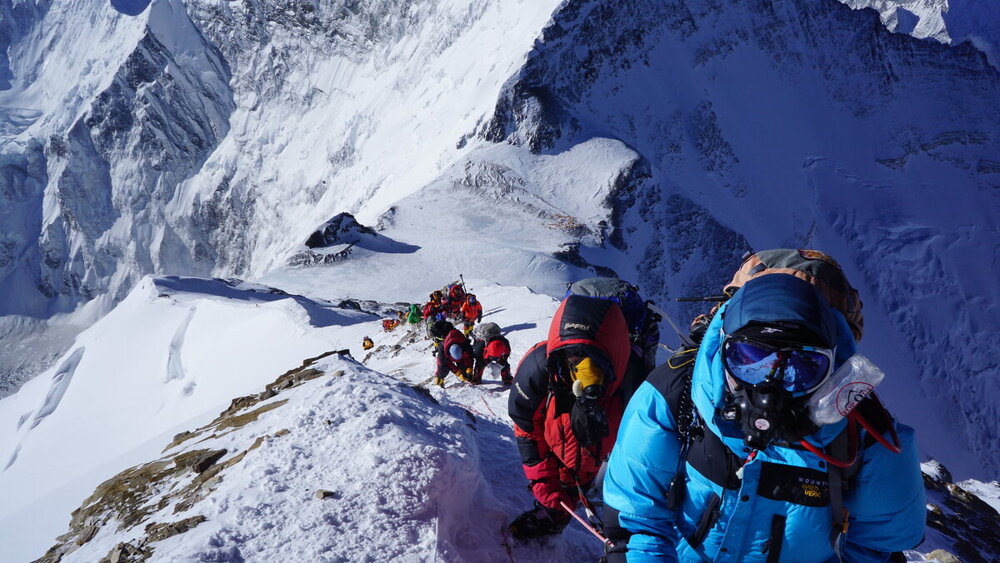
Climbing Everest. Photo by: Mario Simoes
The photo was taken in 2016 and has no relation to the rise of Beck Weathers. Used here to clearly show the atmosphere and process of ascension.
Beck Weathers survived and was able to return to his wife and children. Although he lost the hand of one hand and all the fingers on the other.
Weathers' story of survival has turned him into something of a celebrity. He traveled to the British Virgin Islands at the invitation of Richard Branson and to Hollywood, where he spent three hours talking about that night to Josh Brolin, when the actor was preparing for a role in the film based on the story. 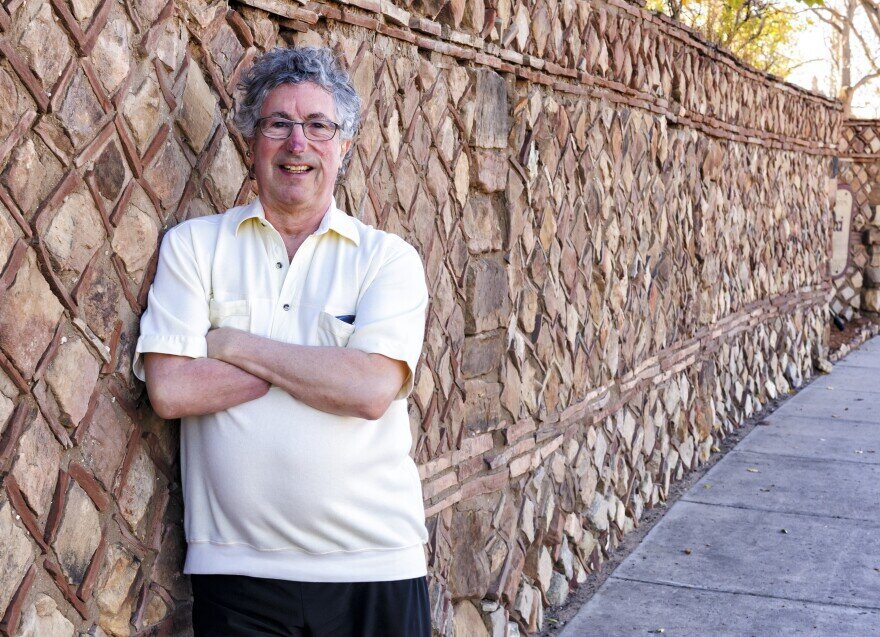
Beck Weathers now.
Decades after that terrible night, Weathers sits in his spacious home in north Dallas. There are no climbing memorabilia on the walls: no photographs of Weathers conquering Vinson Massif or the Carstenz Pyramid (the highest peak on the island of New Guinea and one of the Seven Summits), no climbing ropes or carabiners. The only thing reminiscent of his past as a climber is a photo of him meeting his wife Peach after the tragedy.



